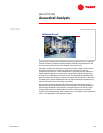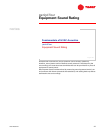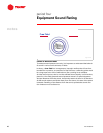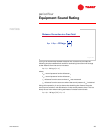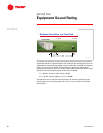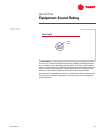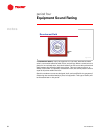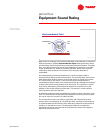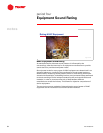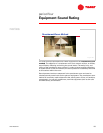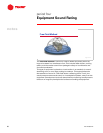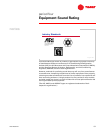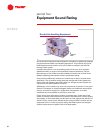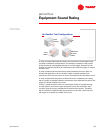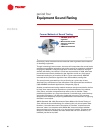
TRG-TRC007-EN 53
period four
Equipment Sound Rating
notes
Most rooms in buildings are somewhere between a free field and a reverberant
field environment. Called a semireverberant field, these spaces have some
characteristics of both free field and reverberant field environments. The walls,
floor, and ceiling prevent the sound from behaving as it would in a free field.
These surfaces are not, however, perfectly reflective. Some of the sound is
reflected by these surfaces, but a portion of the sound is absorbed or
transmitted.
An understanding of how sound behaves in a semireverberant field is
important when taking sound measurements. The characteristics of the sound
field change with distance when a small sound source is placed in the center
of a room. Close to the source, in the near field, sound measurement is
unpredictable. Near the wall, in the reverberant field, the reflected sound begins
to add to the sound coming directly from the source. The reduction in sound
level due to the distance from the source tends to be cancelled out by the
addition of the sound reflecting off the wall. This results in a near-constant
sound-pressure level near the wall.
In the semireverberant field, sound behaves similarly to how it would in a free
field. The sound level will decrease as the distance from the source increases,
but not as much as it would in an ideal free field.
The construction of the room plays a significant role in determining what
portion of the room behaves as a reverberant field, and what portion behaves
as a semireverberant field. Small rooms with hard, reflective surfaces behave
similarly to reverberant rooms. This description often fits a mechanical
equipment room that is constructed of concrete and is small with respect to
the size of the sound source.
Semireverberant Field
semireverberant
field
semireverberant
semireverberant
field
field
wallwall
wall
source
source
near
field
near
near
field
field
Figure 58



